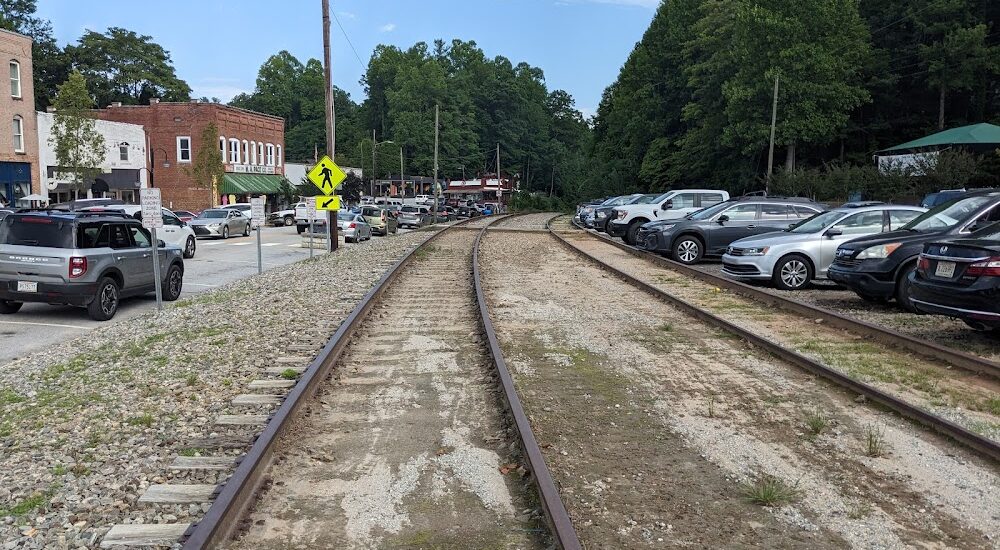Welcome to the Saluda Grade Historical Marker, a site that marks one of the most remarkable engineering feats in American railroad history. Located in Saluda, North Carolina, this marker commemorates the Saluda Grade, the steepest main line standard-gauge railway in the United States.
The story of Saluda Grade begins in the 1870s, a time when post-Civil War industry sought efficient routes for transporting goods between the Carolinas. The Spartanburg & Asheville Railroad Company envisioned a railway connecting Spartanburg, South Carolina, and Asheville, North Carolina. The challenge was the Blue Ridge Escarpment, a daunting natural barrier. The chosen route ascended from Melrose, NC, to the town of Saluda, climbing over 600 feet within just three miles.
In 1878, the construction of this railway was completed under the direction of Captain Charles W. Pearson, a Confederate Army veteran. The project employed convict labor, marking one of the first large-scale uses of such labor in the United States. Despite the perilous working conditions that led to numerous fatalities, the railway was completed, and on July 4, 1878, the first train successfully traversed the Saluda Grade, marking a significant milestone in American rail transport.
The steepness of the Saluda Grade, with a gradient reaching 4.7%, posed significant challenges to trains of the era. The primitive braking systems often led to runaway trains, with 1880 alone witnessing the tragic deaths of 14 men on this stretch.
Over the years, Saluda became a vital junction for both passenger and freight trains. By 1887, eight passenger trains were navigating the grade daily, bringing visitors and commerce to the region. Saluda’s importance began to decline with the eventual cessation of rail operations in 2001 by Norfolk Southern. However, in 2023, Norfolk Southern sold 31 miles of the Saluda Grade to the Saluda Grade Trail Conservancy, which plans to transform it into a rail trail, preserving its historical legacy.
This marker stands as a testament to the ambition and ingenuity of those who dared to conquer the mountains with steel and timber, leaving a lasting impact on the communities of the Southern Appalachians.





